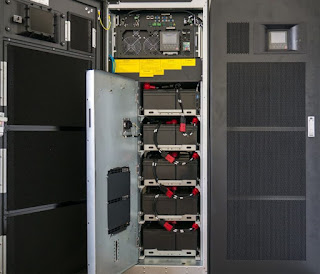UPS Trends: Navigating the Future of Uninterruptible Power Supplies
Introduction
In the rapidly evolving landscape of technology, the role of Uninterruptible Power Supplies (UPS) has become more crucial than ever. As businesses and individuals alike become increasingly reliant on electronic devices and data centers, the need for seamless power supply has escalated. In this article, we delve into the emerging trends in UPS technology, exploring how they are reshaping the power backup industry.
The Evolution of UPS Technology
H1: From Backup Power to Smart Energy Management
Traditionally, UPS systems were designed solely for providing backup power during outages. However, recent advancements have transformed UPS units into sophisticated energy management tools. These modern UPS systems are capable of optimizing energy distribution, reducing electricity consumption, and even participating in demand response programs. By analyzing power usage patterns, they ensure efficient energy utilization while maintaining a constant power supply.
H2: Lithium-ion Batteries Taking the Lead
H3: The Shift Towards Lithium-ion The UPS industry is undergoing a significant shift from traditional lead-acid batteries to more efficient and durable lithium-ion batteries. Lithium-ion batteries offer higher energy density, longer lifespan, and reduced maintenance requirements. This shift not only enhances backup power reliability but also allows for more compact UPS designs, saving valuable space in data centers and other applications.
H2: Modular UPS Systems for Scalability
In a world where scalability is a top priority, modular UPS systems have emerged as a game-changer. These systems consist of hot-swappable modules that can be added or removed according to the power requirements. This scalability ensures that businesses can easily adapt to changing energy needs without experiencing downtime. It also simplifies maintenance and upgrades, further boosting operational efficiency.
Leveraging Cutting-Edge Technologies
H1: IoT Integration for Remote Monitoring
H2: Real-time Monitoring and Management The integration of Internet of Things (IoT) technology with UPS units enables remote monitoring and management. Through sensors and connectivity, users can access real-time data about UPS performance, battery health, and environmental conditions. This proactive approach helps in identifying potential issues before they escalate, reducing the risk of unexpected failures.
H1: AI-Driven Predictive Analysis
H2: Anticipating Failures with AI Artificial Intelligence (AI) is revolutionizing UPS maintenance with predictive analysis. AI algorithms process vast amounts of historical and real-time data to predict potential UPS failures. By identifying patterns and anomalies, AI can provide insights that allow for timely maintenance, minimizing downtime and maximizing system reliability.
Future-Proofing with Sustainable Solutions
H1: Eco-Friendly UPS Designs
H2: The Green Revolution As sustainability takes center stage, UPS manufacturers are focusing on eco-friendly designs. Energy-efficient components, recyclable materials, and optimized manufacturing processes contribute to reducing the carbon footprint of UPS systems. This not only aligns with environmental goals but also results in long-term cost savings for businesses.
H1: Energy Storage Integration
H2: UPS and Renewable Energy Synergy The integration of UPS systems with renewable energy sources like solar and wind power is an emerging trend. This synergy allows UPS units to store excess energy generated during peak times and use it during high-demand periods or power outages. It enhances the overall energy efficiency of the system and reduces dependence on conventional power sources.
Conclusion
In the ever-evolving realm of technology, Uninterruptible Power Supplies have transcended their conventional roles. They have evolved into intelligent energy management tools, incorporating IoT, AI, and sustainable practices. As businesses seek scalable, reliable, and eco-conscious power solutions, UPS trends are steering the industry towards a greener and more resilient future.
FAQs
Q1: What is the main purpose of a UPS? A1: The primary purpose of a UPS is to provide uninterrupted power supply, preventing data loss and equipment damage during outages.
Q2: How does IoT integration benefit UPS systems? A2: IoT integration enables remote monitoring and real-time data access, helping users monitor UPS performance and address issues promptly.
Q3: What are the advantages of lithium-ion batteries in UPS units? A3: Lithium-ion batteries offer higher energy density, longer lifespan, and reduced maintenance requirements, improving UPS efficiency and reliability.
Q4: How does AI contribute to UPS maintenance? A4: AI-driven predictive analysis anticipates potential failures by analyzing data patterns, allowing for proactive maintenance and reduced downtime.
Q5: What role does sustainability play in UPS trends?
A5: Sustainability is a key focus, leading to eco-friendly UPS designs and integration with renewable energy sources for a greener power solution.

